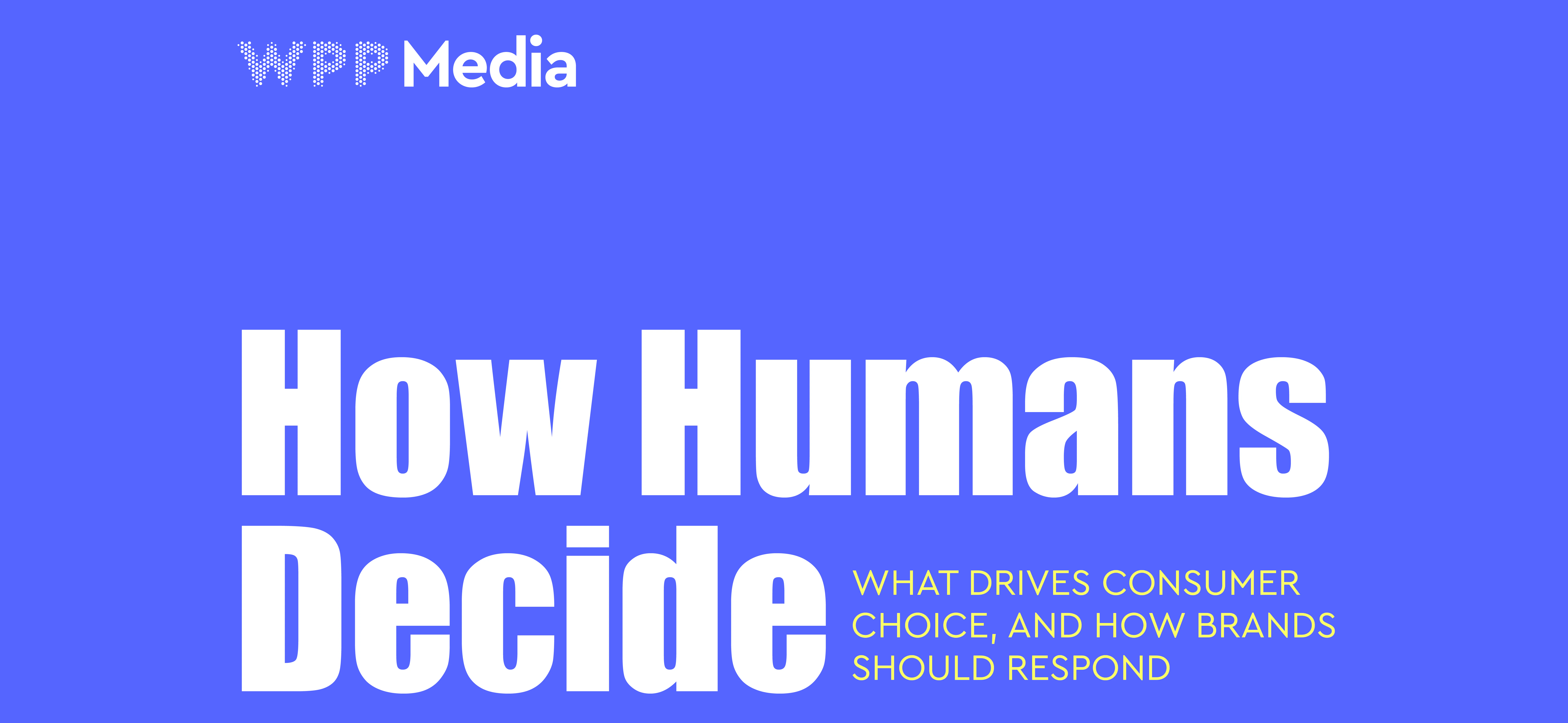Perspectivas28th Oct 2025•5 minute read
How Humans Decide: What if 84% of your sales were already decided in advance?
A groundbreaking study by WPP Media and Oxford University highlights why marketing strategies must evolve—shifting focus from broad reach to the persuasive power of each touchpoint.
What if most of your sales were already determined before your customers even started shopping? That’s the bold question raised by a landmark study from WPP Media, conducted in collaboration with the Saïd Business School at the University of Oxford. Titled “How Humans Decide,” this research, based on an analysis of 1.2 million purchase journeys, challenges the core principles of modern media planning. It uncovers a critical blind spot in our understanding of consumer behavior and introduces a more nuanced and highly effective strategic model. Forget universal “golden rules”—the future of marketing depends on mastering three key concepts: pre-conditioning, receptivity, and the influence of each interaction.
Pre-conditioning: The true origin of the purchase decision
The first and most striking insight is that the purchase journey doesn’t begin when a customer actively searches for a product—it starts much earlier, embedded in their daily lives. The study calls this crucial phase “Brand Priming,” which stems from the cumulative effect of all the experiences—often passive and subconscious—a consumer has with a brand over time.
Here’s the game-changing statistic: on average, 84% of purchases are directly influenced by this pre-conditioning. In other words, most consumers already have a preference for a specific brand before they even enter the active buying phase. They’re not shopping to choose a brand—they’re shopping to confirm a decision they’ve already made.
This insight elevates brand building from a mere awareness activity to the primary driver of sales. Think of it as the “terroir” of a fine wine: its quality isn’t determined when the bottle is opened but is shaped by years of climate, soil, and cultivation. Similarly, brand preference is cultivated over time. The challenge for brands isn’t just to convert customers but to ensure they are the pre-determined choice.
Receptivity: Tailoring your message to the audience
The second pillar of the study is “Receptivity”—a measure of how likely an individual is to be influenced by marketing communication. The research reveals that not all consumers are equally open to influence. In any given category, there are two extremes:
23% of consumers are “non-receptive,” showing strong resistance to marketing messages.
10% of consumers are “highly receptive,” easily swayed by marketing efforts.
Failing to account for this distribution can lead to costly mistakes. Attempting to convert non-receptive consumers with short-term tactics is largely ineffective. On the other hand, focusing solely on highly receptive consumers risks targeting a volatile audience with fleeting loyalty.
The smarter approach is to adapt your strategy. For non-receptive consumers, the goal should be long-term pre-conditioning to build a stable and loyal customer base. For highly receptive consumers, lighter, more targeted actions are sufficient. Since each product category has its own receptivity profile, tailoring your approach is essential to maximize the efficiency of your marketing investments.
The persuasion equation: Not all touchpoints are created equal
The final key concept is the “Influence of Touchpoints.” The study dispels the myth that all media channels are interchangeable. The effectiveness of a touchpoint—whether it’s a TV ad, an online review, or a personal recommendation—depends entirely on its context.
The numbers are compelling:
Randomly selecting four touchpoints gives, on average, a 20% chance of influencing a consumer’s decision.
Strategically selecting the four most effective touchpoints for a given context more than doubles this probability to 47%.
Moreover, the study highlights a clear hierarchy of persuasive power during the active purchase phase. Owned, Shared, and Earned (OSE) channels are, on average, nearly three times more effective than Paid media in converting pre-conditioned consumers. Recommendations from close contacts (word of mouth) and online reviews are by far the most influential, surpassing traditional advertising by a significant margin.
Towards real impact marketing: A new strategic framework
What do these findings mean for marketers? They demand a fundamental shift: moving from a “reach-first” strategy to an “impact-first” strategy.
The new strategic framework is clear:
Focus on long-term pre-conditioning to ensure your brand is among the pre-determined choices for 84% of consumers.
Understand the receptivity dynamics of your category to tailor communication and optimize resource allocation.
Prioritize influence over reach by creating integrated media plans (OSEP) that leverage the unique strengths of each touchpoint in context.
At WPP Media, these principles are already being implemented. Our Open Media Studio platform integrates this data and these new impact metrics, enabling clients to adopt this smarter, more effective approach.
The message is clear: in today’s world of overwhelming choice, the battle for the consumer isn’t won at the final click—it’s won in their minds, long before.
To learn how to apply the principles of “How Humans Decide” to your brand, contact your WPP Media team.

